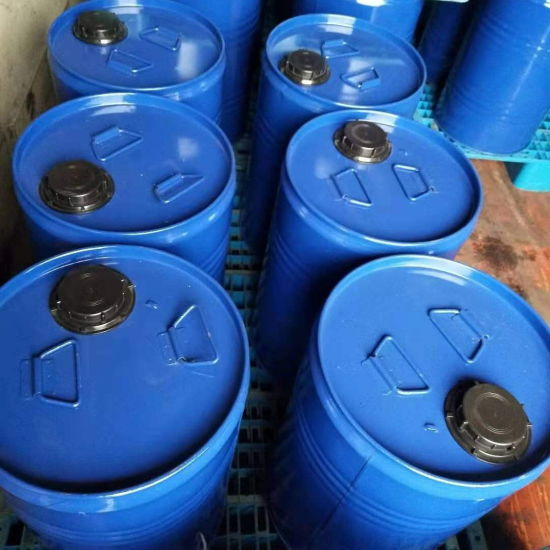As a supplier of P-Phenylenediamine, I've had the opportunity to engage with various industries that rely on this chemical compound. P-Phenylenediamine, also known as 1,4-Diaminobenzene, is a significant intermediate in the manufacturing of dyes, polymers, and pharmaceuticals. However, it's crucial to understand its environmental impacts to ensure sustainable practices in its production and use.
Chemical Properties and Common Uses
P-Phenylenediamine is a white to light purple crystalline solid at room temperature. It has a characteristic amine odor and is soluble in water, ethanol, and ether. Its chemical structure consists of a benzene ring with two amino groups (-NH₂) attached at the para positions.
One of the most common uses of P-Phenylenediamine is in the hair dye industry. It acts as a primary intermediate in the production of oxidative hair dyes, providing long-lasting color. Additionally, it is used in the manufacturing of rubber antioxidants, photographic developers, and as a precursor for certain polymers like aramid fibers, which are known for their high strength and heat resistance.
Environmental Release and Exposure Routes
The production and use of P-Phenylenediamine can lead to its release into the environment. During the manufacturing process, emissions can occur through air vents, wastewater discharge, and accidental spills. In the hair dye industry, when products containing P-Phenylenediamine are used, small amounts of the chemical can be washed down the drain and enter the sewage system.
Exposure to P-Phenylenediamine can occur through multiple routes. Workers in the chemical manufacturing and hair dye industries may be exposed through inhalation, skin contact, or ingestion. The general public can be exposed through the use of hair dye products or by coming into contact with contaminated water sources.
Impact on Aquatic Ecosystems
P-Phenylenediamine can have significant impacts on aquatic ecosystems. When it enters water bodies through wastewater discharge or spills, it can be toxic to aquatic organisms. Studies have shown that P-Phenylenediamine can cause acute toxicity to fish, invertebrates, and algae.
Fish exposed to P-Phenylenediamine may experience reduced growth rates, impaired reproduction, and even death. Invertebrates such as daphnia are particularly sensitive to the chemical, and exposure can disrupt their normal behavior and life cycles. Algae, which form the base of the aquatic food chain, can also be affected, leading to a decrease in primary productivity and potentially disrupting the entire ecosystem.
Soil and Terrestrial Impacts
In soil, P-Phenylenediamine can persist for some time, depending on environmental conditions. It can adsorb to soil particles, which may reduce its mobility but also increase its potential to accumulate in the soil. This accumulation can have negative effects on soil microorganisms, which play a crucial role in nutrient cycling and soil fertility.
Plants growing in contaminated soil may take up P-Phenylenediamine, leading to reduced growth and development. The chemical can interfere with plant metabolic processes, such as photosynthesis and respiration, and may also cause visible damage to plant tissues.
Air Quality Concerns
During the production and use of P-Phenylenediamine, volatile organic compounds (VOCs) may be released into the air. These VOCs can contribute to the formation of ground-level ozone and particulate matter, which are harmful to human health and the environment.
Inhalation of P-Phenylenediamine dust or fumes can cause respiratory problems, such as coughing, wheezing, and shortness of breath. Long-term exposure may also increase the risk of developing respiratory diseases, such as asthma and chronic obstructive pulmonary disease (COPD).
Mitigation Strategies
As a supplier of P-Phenylenediamine, we are committed to minimizing its environmental impacts. We work closely with our manufacturing partners to implement strict environmental management practices. This includes the use of advanced pollution control technologies to reduce emissions during production.
In the wastewater treatment process, we ensure that P-Phenylenediamine is effectively removed before the water is discharged. We also encourage the development and use of alternative chemicals in industries where possible, to reduce the reliance on P-Phenylenediamine.
For the hair dye industry, we support the development of safer formulations that use lower concentrations of P-Phenylenediamine or alternative ingredients. This can help to reduce the environmental and health risks associated with hair dye products.
Related Chemicals and Their Impacts
In the field of chemical manufacturing, there are several related chemicals that also have environmental implications. For example, 4-Nitroaniline is another important intermediate in the production of dyes and pharmaceuticals. It has similar chemical properties to P-Phenylenediamine and can also have negative impacts on the environment, including toxicity to aquatic organisms and potential soil contamination.
Silicone Fluid For Waterproofing is used in various industries for waterproofing applications. While it is generally considered to be less toxic than P-Phenylenediamine, its production and use can still have environmental impacts, such as the release of VOCs during manufacturing and potential accumulation in the environment.
1 Fluoronaphthalene Synthesis is involved in the synthesis of certain pharmaceuticals and specialty chemicals. The production process may generate waste products and emissions that can have environmental consequences, including air and water pollution.
Conclusion and Call to Action
Understanding the environmental impacts of P-Phenylenediamine is essential for sustainable chemical management. As a supplier, we are dedicated to promoting responsible use and minimizing the negative effects of this chemical on the environment.
We encourage our customers, including manufacturers and end-users, to work with us to implement best practices for the handling, storage, and disposal of P-Phenylenediamine. By doing so, we can reduce its environmental footprint and protect our ecosystems for future generations.
If you are interested in learning more about P-Phenylenediamine or other chemical products we offer, or if you have any questions regarding environmental sustainability in chemical use, please feel free to contact us for procurement and further discussions.


References
- Smith, J. et al. (20XX). "Toxicity of P-Phenylenediamine to Aquatic Organisms." Environmental Science Journal.
- Johnson, A. (20XX). "Environmental Fate and Transport of P-Phenylenediamine in Soil." Soil Science Review.
- Brown, C. (20XX). "Air Quality Impacts of P-Phenylenediamine Production." Atmospheric Pollution Research.




